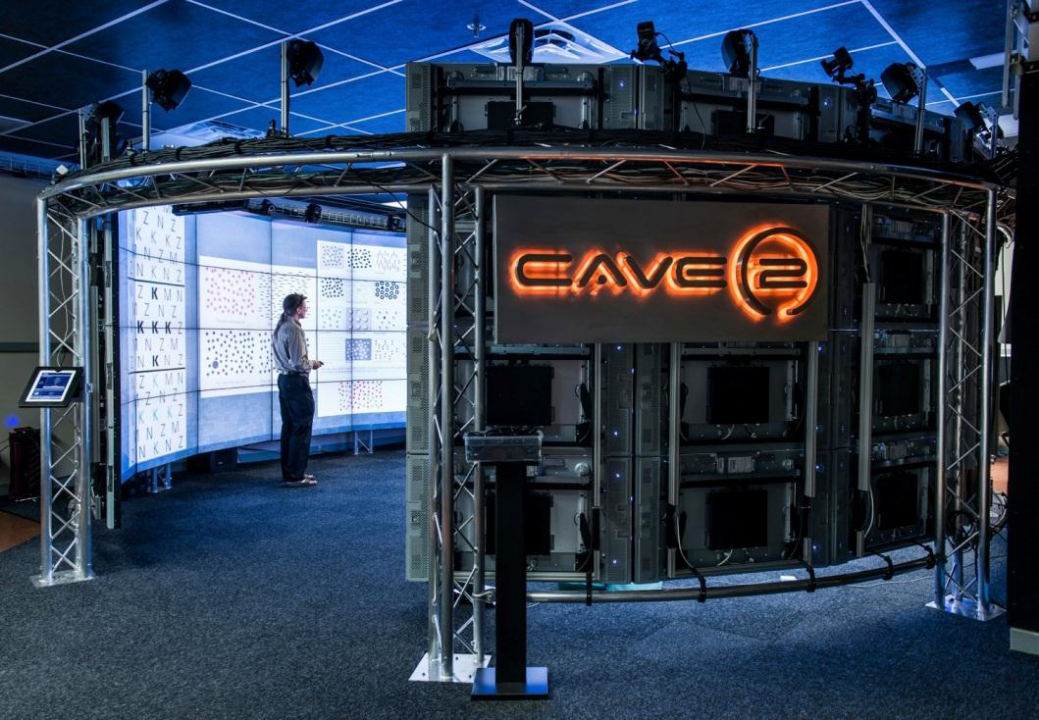|
|
||||||||||||||||||
CAVE2: A Hybrid Reality Environment for Immersive Simulation and Information Analysis
Authors: Febretti, A., Nishimoto, A., Thigpen, T., Talandis, J., Long, L., Pirtle, JD, Peterka, T., Verlo, A., Brown, M., Plepys, D., Sandin, D., Renambot, L., Johnson, A., Leigh, J.
Publication: Proceedings of IS&T / SPIE Electronic Imaging, The Engineering Reality of Virtual Reality 2013, San Francisco, CA Hybrid Reality Environments represent a new kind of visualization spaces that blur the line between virtual environments and high resolution tiled display walls. This paper outlines the design and implementation of the CAVE2™ Hybrid Reality Environment. CAVE2 is the world’s first near-seamless flat-panel-based, surround-screen immersive system. Unique to CAVE2 is that it will enable users to simultaneously view both 2D and 3D information, providing more flexibility for mixed media applications. CAVE2 is a cylindrical system of 24 feet in diameter and 8 feet tall, and consists of 72 near-seamless, off-axis-optimized passive stereo LCD panels, creating an approximately 320 degree panoramic environment for displaying information at 37 Megapixels (in stereoscopic 3D) or 74 Megapixels in 2D and at a horizontal visual acuity of 20/20. Custom LCD panels with shifted polarizers were built so the images in the top and bottom rows of LCDs are optimized for vertical off-center viewing- allowing viewers to come closer to the displays while minimizing ghosting. CAVE2 is designed to support multiple operating modes. In the Fully Immersive mode, the entire room can be dedicated to one virtual simulation. In 2D model, the room can operate like a traditional tiled display wall enabling users to work with large numbers of documents at the same time. In the Hybrid mode, a mixture of both 2D and 3D applications can be simultaneously supported. The ability to treat immersive work spaces in this Hybrid way has never been achieved before, and leverages the special abilities of CAVE2 to enable researchers to seamlessly interact with large collections of 2D and 3D data. To realize this hybrid ability, we merged the Scalable Adaptive Graphics Environment (SAGE) - a system for supporting 2D tiled displays, with Omegalib - a virtual reality middleware supporting OpenGL, OpenSceneGraph and Vtk applications. Keywords: Hybrid Reality, Display Wall, Passive Stereoscopic, Immersive Systems Date: February 4, 2013 - February 5, 2013 Document: View PDF |